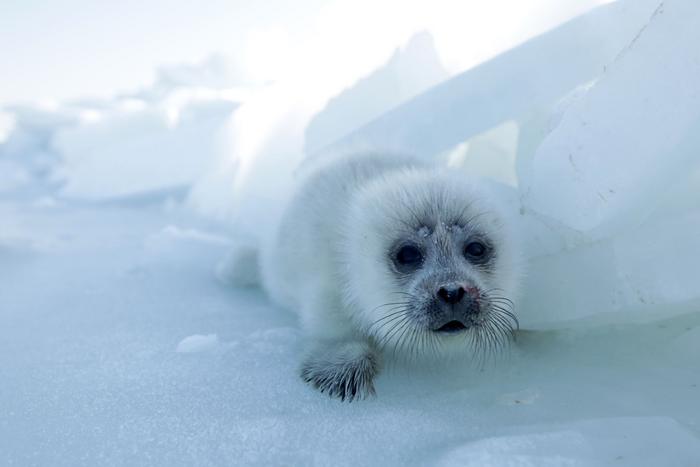The Caspian Sea, celebrated as the world’s largest enclosed body of water, is undergoing dramatic changes that pose alarming risks not only to its rich biodiversity but also to the millions of people who rely on its resources. Research spearheaded by the University of Leeds has painted a harrowing picture of the future for this vital ecosystem and the human infrastructure associated with it. In a pivotal study, scientists have mapped out the potential repercussions of declining water levels, revealing an urgent call for action to safeguard both environmental and human health in the region.
Over recent decades, the Caspian Sea has been subjected to increasingly severe environmental pressures, primarily driven by climate change. As global temperatures rise, the evaporation rate from the sea’s surface accelerates beyond the replenishment from rivers feeding into it. The consequences are stark—current projections suggest that even under favorable climate scenarios, water levels could plummet by up to 10 meters by the end of the century, and potentially more in a high-emission future scenario where temperatures could rise unchecked. This anticipated drop in levels appears inevitable and could lead to the loss of vast areas of the sea, reminiscent of the devastating Aral Sea crisis.
In the academic paper published in Communications Earth & Environment, researchers detail how an area equivalent to over 112,000 square kilometers, surpassing the entirety of Iceland, may completely dry up. This includes critical habitats that underpin the ecological integrity of the Caspian region, which is home to rare and endangered species including the Caspian seal and multiple sturgeon species. The significant loss of shallow water habitats could disrupt breeding patterns and restrict access to spawning rivers, significantly threatening biodiversity and the region’s ecological balance.
The Caspian Sea’s unique ecosystem relies heavily on its intricate network of shallow waters, rich lagoons, and reed beds. These areas are essential not only for the thriving marine life but also for migratory birds that depend on these habitats for food and rest during their long journeys between continents. As water levels drop, the resulting habitat alterations will have cascading effects, potentially jeopardizing not just local species, but entire food webs that sustain these ecosystems. The importance of maintaining biodiversity in this rapidly changing environment cannot be overstated, as every species plays a critical role in the larger ecological tapestry.
The implications extend beyond environmental concerns; there are severe socio-economic repercussions for the 15 million people residing along the shores of the Caspian. Nations such as Azerbaijan, Iran, Kazakhstan, Russia, and Turkmenistan all depend on the Caspian for fishing, trade, and as a vital water source. The deterioration of its water levels threatens established industries, economic stability, and may drive many coastal communities into economic despair as fisheries dwindle and agricultural opportunities become limited due to shifting climatic conditions.
As early as 5 meters of decline, many northern settlements will find themselves abandoned as the coastline shifts miles away from existing infrastructure. Ports that have served these nations for centuries could become obsolete, further stranding industrial and fishing vessels and exacerbating economic challenges. A comprehensive vulnerability assessment indicates that critical industrial sites, including many oil and gas production facilities, will encounter logistical challenges as they struggle to adapt to these drastic changes.
Furthermore, the repercussions of this environmental upheaval will likely intensify issues related to health and safety. Dust storms from exposed seabeds—similar to those that arose from the desiccated Aral Sea—may unleash distributions of salt and industrial contaminants into the atmosphere. This poses an elevated risk to respiratory health and could have long-term implications for local populations, compounding the existing health issues exacerbated by pollution and inadequate access to fresh water sources.
In light of such profound ecological and human health challenges, researchers advocate for innovative, dynamic conservation strategies that move beyond traditional fixed protected areas to respond proactively to the shifting realities of biodiversity loss. Establishing flexible boundaries for conservation zones and adopting integrative conservation planning approaches are critical to ensuring that protection measures remain effective as environmental conditions evolve.
Dr. Simon Goodman highlighted the importance of initiating action towards safeguarding biodiversity while simultaneously supporting the livelihoods of local communities. The need for urgent and coordinated responses to climate change effects is critical. Alongside policymaking, scientists emphasize the importance of community engagement to build resilience against eventualities tied to resource depletion.
Collaborations among international researchers and organizations are pivotal in addressing the looming threats to the Caspian Sea. This collaborative effort is aimed at galvanizing awareness and creating robust plans to mitigate the intensifying impacts of climate change. By pooling resources and expertise, stakeholders can enhance biodiversity monitoring capabilities, strategize conservation planning, and develop adaptive infrastructure systems to foster both ecological and social resilience.
Ultimately, the path forward calls for a balancing act—one that prioritizes the health of ecosystems while recognizing the necessity for sustainable human development. Continued research will be crucial to elucidating and addressing the challenges that arise as the Caspian Sea continues to face unprecedented declines in its water levels. Drawing on effective advocacy and regional cooperation, the concerted effort can lead to comprehensive strategies to curb the trajectory of climate change impacts, ensuring the preservation of both biodiversity and human well-being in the Caspian region.
This situation serves as a critical lesson in environmental stewardship, connecting the dots between ecological health, climate action, and human prosperity. As the world watches, the story of the Caspian Sea unfolds—a vivid reminder that the impacts of climate change are both immediate and long-term, requiring responses that are urgent, informed, and inclusive.
Subject of Research: The impact of declining water levels in the Caspian Sea on biodiversity and human infrastructure.
Article Title: Rapid decline of Caspian Sea level threatens ecosystem integrity, biodiversity protection, and human infrastructure.
News Publication Date: 10-Apr-2025
Web References: https://doi.org/10.1038/s43247-025-02212-5
References: Not applicable
Image Credits: ©Sarah DelBen, Central Asian Institute of Ecological Research (CAIER), Almaty, Kazakhstan
Keywords: Climate Change, Endangered Species, Human Health, Biodiversity, Climate Change Adaptation.




